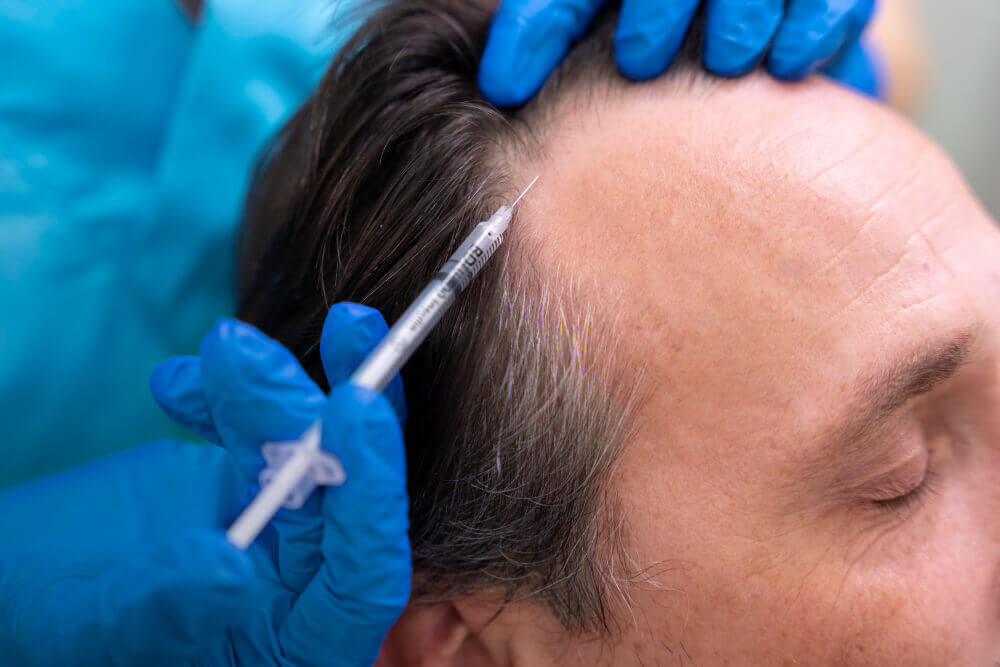PRP Treatment: A Comprehensive Guide
Welcome to our comprehensive guide on PRP treatment. In this article, we will explore the benefits, procedures, and potential risks associated with PRP treatment. If you’re considering this innovative therapy, read on to discover everything you need to know.
What is PRP Treatment?
Platelet-rich plasma (PRP) treatment is a cutting-edge medical procedure that utilizes the healing properties of platelets found in our blood. This non-surgical therapy has gained popularity in recent years due to its potential to accelerate healing and promote tissue regeneration.
The Procedure
During a PRP treatment, a small sample of your blood is drawn and processed to separate the platelets from other components. The concentrated platelet-rich plasma is then injected into the targeted area of your body, stimulating the natural healing process.
Benefits of PRP Treatment
PRP treatment offers a range of potential benefits for various conditions and injuries. Here are some of the key advantages:
Promotes tissue regeneration
Accelerates healing
Reduces pain and inflammation
Enhances collagen production
Improves skin texture and tone
Supports hair growth
Conditions Treated with PRP
PRP treatment has shown promising results in treating a wide range of conditions, including:
Orthopedic injuries
Tendonitis
Arthritis
Chronic pain
Wound healing
Alopecia
Is PRP Treatment Safe?
PRP treatment is generally considered safe as it utilizes your body’s platelets, reducing the risk of adverse reactions. However, as with any medical procedure, there are potential risks and considerations. It is essential to consult with a qualified healthcare professional to assess your suitability for PRP treatment and discuss any potential side effects.

In conclusion, PRP treatment is a revolutionary therapy with the potential to accelerate healing, promote tissue regeneration, and provide relief for various conditions. If you’re considering PRP treatment, consult with a healthcare professional to determine if it’s the right option for you. Remember, your health and well-being should always be a priority.
PRP Treatment FAQs
1. What is PRP treatment?
PRP treatment, or Platelet-Rich Plasma treatment, is a medical procedure where a patient’s own blood is drawn, processed to separate the platelet-rich plasma, and then injected back into the body to promote healing and tissue regeneration.
2. What conditions can PRP treatment help with?
PRP treatment can be used to help with various conditions such as osteoarthritis, tendon injuries, ligament sprains, muscle strains, and hair loss.
3. How does PRP treatment work?
PRP treatment works by using the growth factors and healing properties found in platelet-rich plasma to stimulate tissue repair and regeneration at the site of injury or condition.
4. Is PRP treatment safe?
PRP treatment is generally considered safe since it uses the patient’s own blood, reducing the risk of allergic reactions or infections. However, as with any medical procedure, there can be potential risks and side effects, which should be discussed with a healthcare professional.
5. How long does a PRP treatment session take?
A typical PRP treatment session can take around 45 minutes to an hour, including the time for blood draw, processing, and injection.
6. How many PRP treatment sessions are needed?
The number of PRP treatment sessions required can vary depending on the condition being treated and the individual patient’s response. In some cases, a single session may be sufficient, while others may require multiple sessions spaced apart over some time.
7. Does PRP treatment hurt?
PRP treatment may involve some discomfort or pain during the injection process. However, local anesthesia or numbing creams can be used to minimize any discomfort.
8. What is the recovery time after PRP treatment?
The recovery time after PRP treatment can vary depending on the specific condition being treated and the individual’s healing response. In general, patients can expect some initial soreness or swelling at the injection site, but it typically resolves within a few days to a week.
9. Are there any restrictions or precautions after PRP treatment?
After PRP treatment, patients may be advised to avoid strenuous activities, excessive heat or cold, and certain medications for a period of time. It is important to provide specific post-treatment instructions provided by the healthcare professional.
10. Is PRP treatment covered by insurance?
Insurance coverage for PRP treatment can vary depending on the insurance provider and the specific condition being treated. It is recommended to check with your insurance company to determine coverage options.




